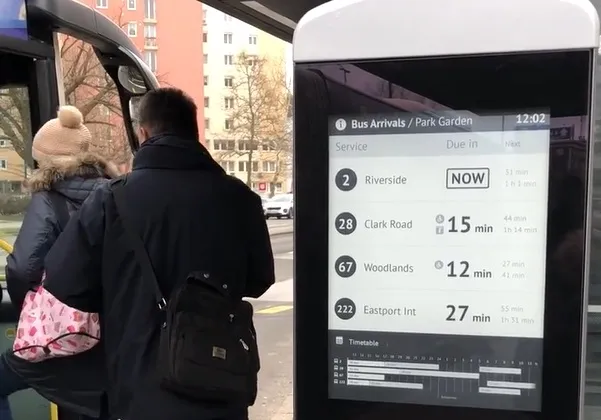
Papercast, the solar- and battery-owered e-paper passenger information displays manufacturer, is to partner with audiovisual tech systems integrator Solotech.
The companies say their relationship "will help accelerate the provision of innovative and sustainable solutions to the North American public transportation industry" such as bus, metro, train, parking and light rail stations.
Solotech will be an official reseller of Papercast’s solutions, which have low energy consumption and are designed to be quickly installed ‘off-the-grid’, with a cloud-based content management system allowing for real-time data integration, "making it easy to share timely and accurate information with the public".
E-paper is designed to be readable in direct sunlight and has built-in illumination for low-light visibility.
Papercast displays consume roughly three times less power than comparable e-paper solutions, the firm says, and up to 32 times less than other display technologies.
Ruggedized IP67 and IK09 enclosures offer strong environmental protection and impact resistance.
“With its e-paper solution deployed in several countries globally, Papercast has become a seasoned leader in the public transport signage market,” says Jonathan Henri, Global Market Leader, Transportation and Critical Application, Solotech.
“We are pleased to further support our transport clients seeking more sustainable technologies, and continue our journey to deliver more eco-conscious projects.”
“Papercast and Solotech share a common commitment to improve public transport through sustainable technologies," states Cameron Maconie, Head of Business Development for Papercast. "We look forward to our continued collaboration as we jointly expand our business and deliver leading passenger information display solutions to the North American market.”










